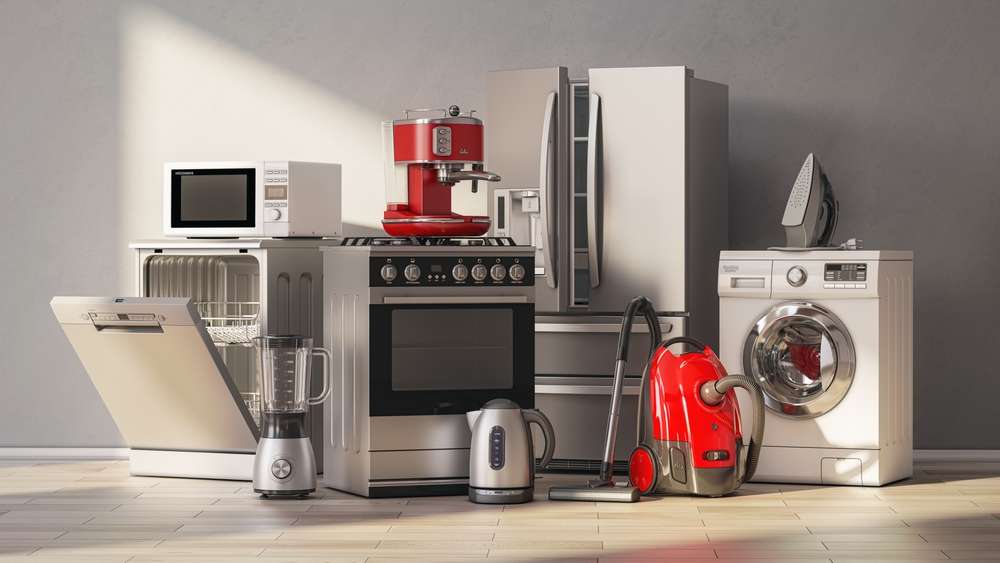Kitchen Appliances: Essential Tools for Modern Home Cooking
The heart of any home, the kitchen, relies on a variety of appliances to make cooking and food preparation efficient and enjoyable. From basic necessities to advanced gadgets, kitchen appliances play a crucial role in our daily lives. This article explores the world of kitchen appliances, their types, energy efficiency, modern design trends, and convenience features that enhance our culinary experiences.

What are the different types of kitchen appliances for home use?
Kitchen appliances come in a wide range of types, each serving specific purposes in food preparation and storage. Major appliances include refrigerators, ovens, stoves, and dishwashers. These form the backbone of any functional kitchen, handling tasks like food preservation, cooking, and cleaning.
Smaller countertop appliances complement these larger units. Microwave ovens provide quick heating and defrosting options. Food processors and blenders assist in chopping, pureeing, and mixing ingredients. Coffee makers, toasters, and electric kettles are essential for many households’ morning routines.
Specialized appliances cater to specific cooking needs. Stand mixers are popular for baking enthusiasts, while slow cookers and pressure cookers offer convenient ways to prepare meals with minimal supervision. Air fryers have gained popularity as a healthier alternative to deep frying, using hot air circulation to crisp food with less oil.
How do energy-efficient kitchen appliances benefit homeowners?
Energy-efficient kitchen appliances offer numerous benefits to homeowners, both environmentally and economically. These appliances are designed to perform their functions while consuming less electricity or gas, resulting in reduced energy bills and a smaller carbon footprint.
Modern refrigerators with ENERGY STAR certification can use up to 15% less energy than standard models. Energy-efficient dishwashers not only save electricity but also use less water, contributing to overall resource conservation. Induction cooktops heat food more quickly and efficiently than traditional electric or gas stoves, reducing cooking times and energy consumption.
The long-term savings from energy-efficient appliances can be substantial. While these models may have a higher upfront cost, the reduction in utility bills over the appliance’s lifespan often outweighs the initial investment. Additionally, many regions offer rebates or tax incentives for purchasing energy-efficient appliances, further offsetting costs.
What are the modern design trends in kitchen appliances?
Modern kitchen appliances are not just about functionality; they also contribute to the aesthetic appeal of the kitchen. Current design trends focus on sleek, minimalist looks that seamlessly integrate with various kitchen styles.
Stainless steel remains a popular finish for its durability and timeless appearance. However, manufacturers now offer appliances in a range of colors and finishes to match diverse kitchen decors. Matte black, brushed bronze, and custom color options allow for greater personalization.
Smart technology integration is another prominent trend. Appliances with Wi-Fi connectivity enable remote control and monitoring through smartphone apps. Some refrigerators feature built-in touchscreens for recipe suggestions, grocery list management, and even video streaming.
Handles are becoming less prominent, with many appliances featuring handleless designs or recessed grips for a more streamlined look. Built-in and panel-ready appliances that blend seamlessly with cabinetry are increasingly popular in high-end kitchens, creating a cohesive and uncluttered appearance.
What convenience features do modern kitchen appliances offer?
Modern kitchen appliances come equipped with a variety of convenience features designed to simplify cooking tasks and improve user experience. These features often leverage advanced technology to enhance functionality and efficiency.
Multi-function ovens combine conventional, convection, and sometimes steam cooking modes in a single appliance, offering versatility for different recipes. Some models include pre-programmed settings for specific dishes, taking the guesswork out of cooking times and temperatures.
Refrigerators now offer features like adjustable shelving, door-in-door access for frequently used items, and water and ice dispensers. Advanced models include temperature-controlled drawers for optimal food storage and cameras that allow users to check contents remotely.
Dishwashers have seen improvements in rack design, with adjustable tines and specialized zones for different types of dishes. Many models now include sensors that detect soil levels and adjust cycle times accordingly, ensuring thorough cleaning while conserving water and energy.
Voice control compatibility is becoming more common, allowing users to operate appliances hands-free through virtual assistants like Amazon Alexa or Google Home. This feature is particularly useful when hands are occupied with food preparation.
How do kitchen appliances compare in terms of features and pricing?
When considering kitchen appliances, it’s important to compare features and pricing to find the best value for your needs. Here’s a comparison of some popular kitchen appliances:
| Appliance Type | Brand/Model | Key Features | Cost Estimation |
|---|---|---|---|
| Refrigerator | Samsung RF28R7551SR | Family Hub touchscreen, FlexZone drawer, Wi-Fi enabled | $3,000 - $3,500 |
| Range | GE Profile PB960SJSS | Double oven, convection, self-cleaning | $2,000 - $2,500 |
| Dishwasher | Bosch 800 Series SHPM88Z75N | 3rd rack, crystal dry technology, ultra-quiet operation | $1,000 - $1,300 |
| Microwave | Panasonic NN-SN686S | Inverter technology, sensor cooking, 1200 watts | $150 - $200 |
Prices, rates, or cost estimates mentioned in this article are based on the latest available information but may change over time. Independent research is advised before making financial decisions.
Kitchen appliances vary widely in price depending on brand, features, and size. High-end models with advanced features and smart technology tend to be more expensive, while basic models offer essential functions at lower price points. When budgeting for kitchen appliances, consider long-term energy savings and durability in addition to upfront costs.
In conclusion, kitchen appliances are essential tools that enhance our cooking experiences and daily lives. From energy efficiency to modern design trends and convenient features, the world of kitchen appliances continues to evolve, offering homeowners a wide range of options to suit their needs and preferences. By understanding the different types, benefits, and features available, consumers can make informed decisions when selecting appliances for their kitchens.



